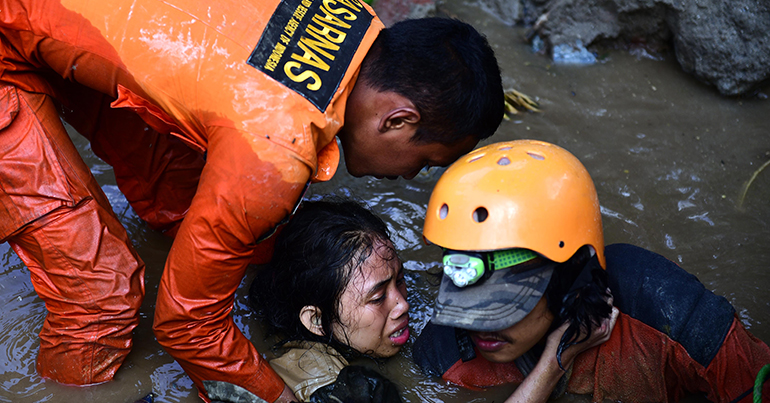The death toll is expected to climb much higher in the upcoming days, with officials warning that it could reach into the thousands. As search-and-rescue efforts continue in the city of Palu, some of the island’s most populated cities – including the coastal town of Donggala, home to 300,000 – still remain cut off from any assistance.
“The Indonesian Red Cross is racing to help survivors, but we don’t know what they’ll find there,” Jan Gelfand, head of the International Red Cross delegation in Indonesia, told CNN on Sunday. “I don’t think we’ve quite seen the worst of things yet.”
At least 2.4 million people have been affected by the disaster, according to Indonesia’s Disaster Management Agency, and hundreds have been badly injured. Around 17,000 people have been left homeless in Palu alone.
Due to significant damage to the Palu airport, only limited flights have been able to reach the affected area. Destroyed roads and the Indonesian government’s slow decision to accept foreign assistance have stymied the flow of aid to the island, various reports have stated. Supplies of medicine, food and water remain low.
“No aid has arrived. We have lost everything,” one resident told the BBC.
In Palu, unidentified bodies line the streets covered in tarps. First responders continue to dig through the rubble, sometimes by hand, in the hopes of finding trapped survivors. A severe lack of resources and shelter have left many to sleep on the side of the road, while rescuers have been treating patients outdoors.
Desperate survivors have turned to looting shops for basic supplies.
“There has been no aid, we need to eat. We don’t have any other choice, we must get food,” one man in Palu told AFP, as he filled a basket with goods from a nearby store.
In the hills above Palu, volunteers are digging a 100m-long grave for more than 1,000 victims in an attempt to prevent outbreak of disease.
Justice Ministry officials also announced on Monday that more than 1,200 convicts had escaped from three different prisons across Sulawesi in the aftermath of the quake.
Three days after the disaster, an Indonesian official announced on Twitter that Indonesia’s President Joko Widodo had officially opened the country to international aid for disaster relief. Over the weekend, countries including Singapore and Thailand had already offered their assistance in the rescue efforts, while the European Union and South Korea had offered $1.7m and $1m, respectively, in aid.
In light of the scope of the disaster, which saw waves more than three-metres tall crashing into Indonesia’s coastline, many tsunami experts and officials have begun to question why residents were not adequately warned.
According to Sutopo Purwo Nugroho, spokesman for the country’s national disaster agency, none of Indonesia’s 22 buoys intended to monitor for tsunamis have been operational for the past six years.
“The disaster funding continues to decrease every year,” he said in an announcement on Sunday. “The threat of disasters increases, disasters increase, but the [disaster agency] budget decreases.”


